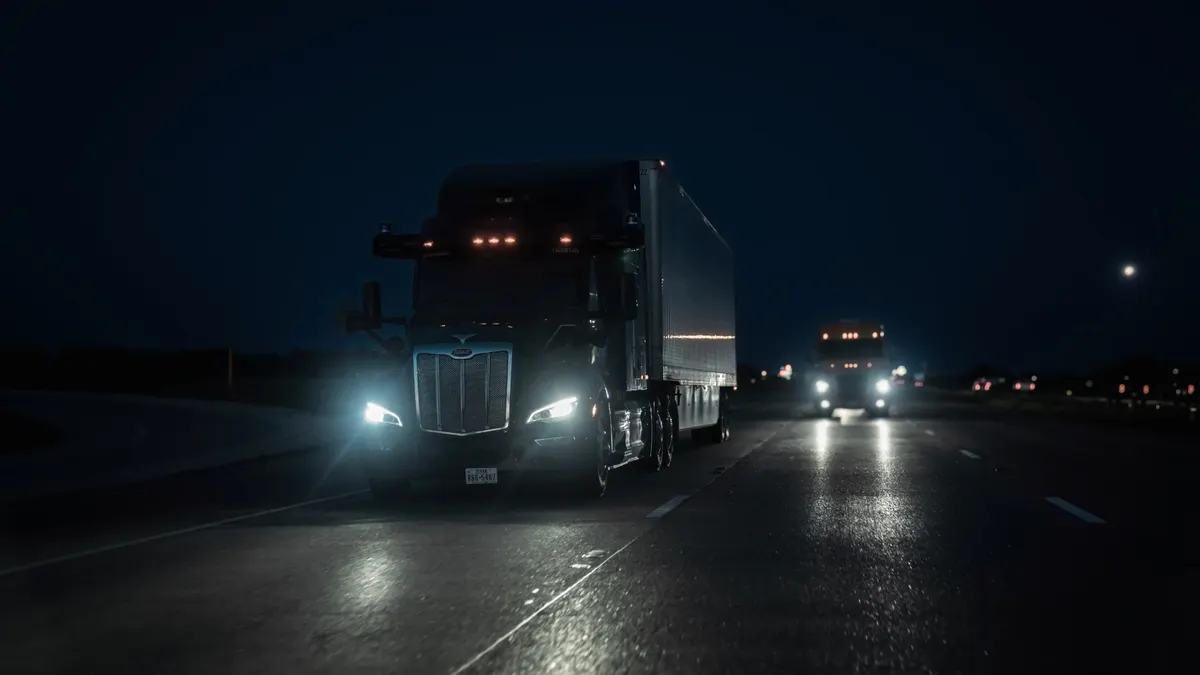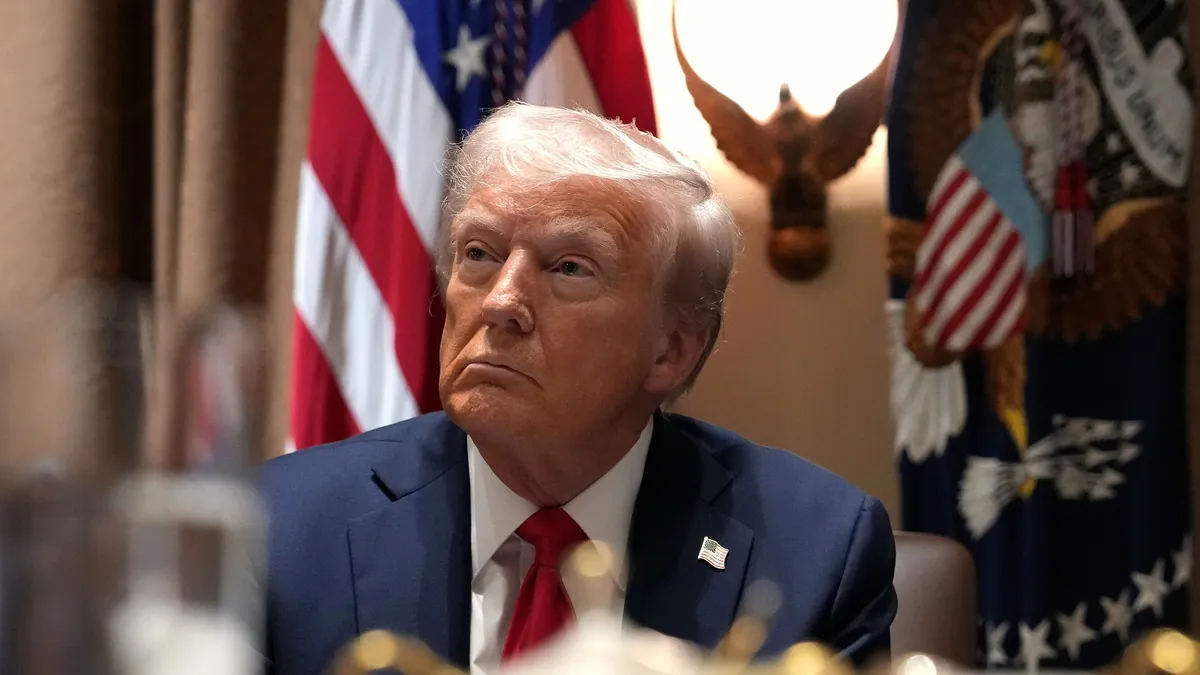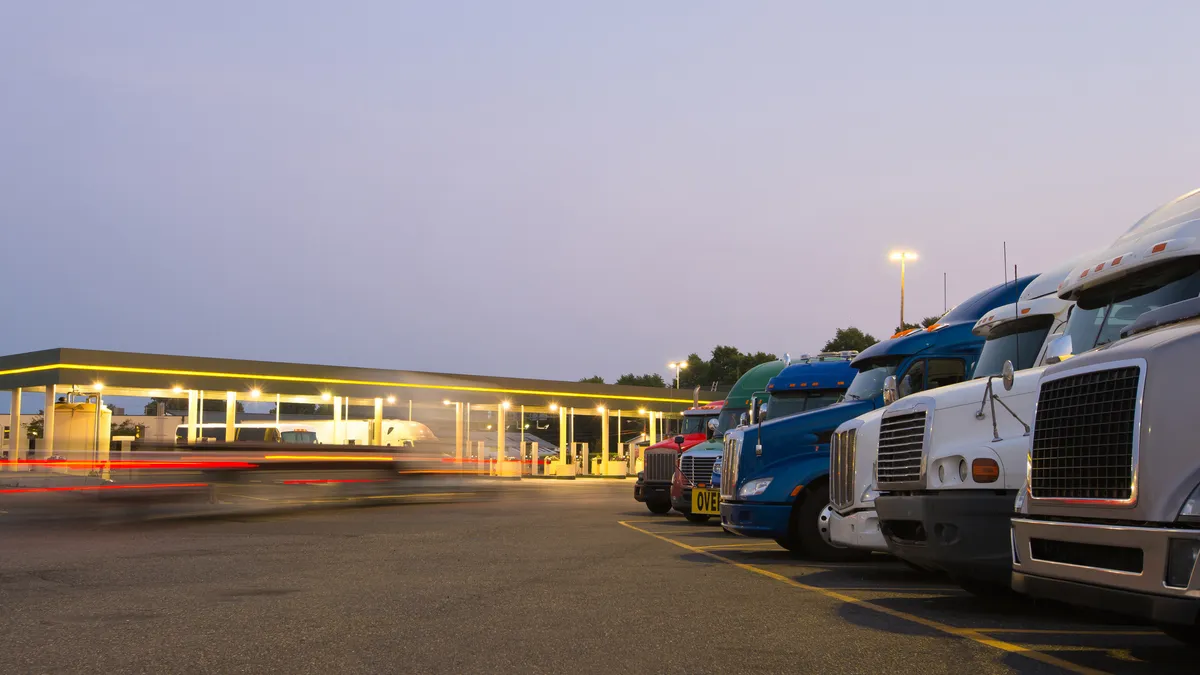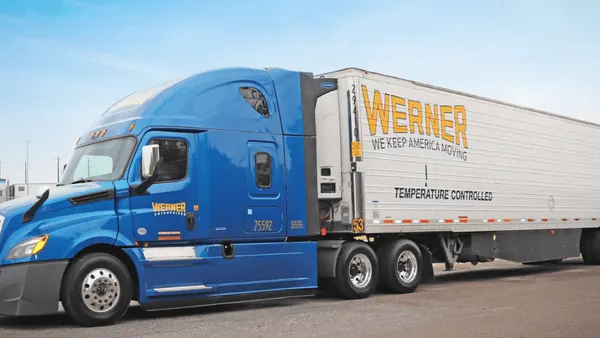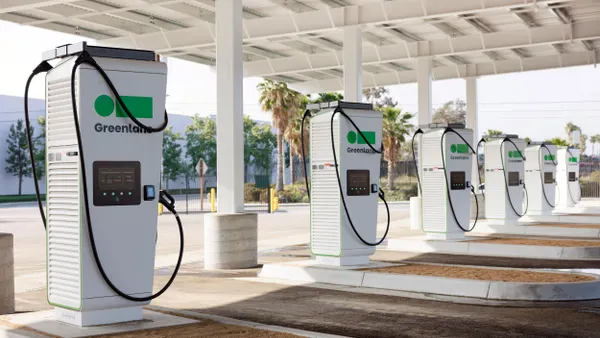Aurora Innovation began nighttime driverless operations in July, the company said on a Q2 earnings call last week.
The expansion comes as the tech company seeks to scale operations. The company said in a shareholder letter that nighttime driving “more than doubles truck utilization potential.”
Aurora commenced driverless operations in Q2 but added a front-seat observer at the request of a partner, Paccar, co-founder and CEO Chris Urmson said. That decision was connected with Paccar’s process and concern over prototype parts being in the trucks.
The companies have been working for years together through a strategic partnership to develop the technology on Paccar trucks. Even though a person is still present on the vehicle, the technology can maneuver the trucks without interventions, Aurora noted.
Another milestone in Q2 involved earning its first revenue.
“With the launch of driverless operations during the second quarter of 2025, we began recognizing revenue, which totaled $1 million across driverless and vehicle operator supervised commercial loads for Hirschbach, Uber Freight, Werner, FedEx, Schneider and Volvo Autonomous Solutions, among others,” CFO David Maday said on the call.
Aurora also expanded its driverless operations to three trucks in July, operating between Dallas and Houston. The approximately 200-mile trip takes about three hours to complete one way, and those trucks haul freight for customers Hirschbach and Uber Freight seven days a week both day and night, the company said in an email.
“[Although] an observer is present, we’re running that software as if there’s nobody behind the wheel, which is different from what our Vehicle Operators are doing on development runs, like on our Phoenix route,” a spokesperson told Trucking Dive in an email.
Meanwhile, Aurora is also evaluating its autonomous tech with a vehicle operator on board on additional routes from Fort Worth to El Paso, Texas; El Paso to Phoenix; and Fort Worth to Phoenix.
The tech company expects to unlock driverless lanes for those additional routes all by the end of 2025, Urmson said on the call. Aurora also anticipates using the technology on vehicles in the rain in that same timeframe.



